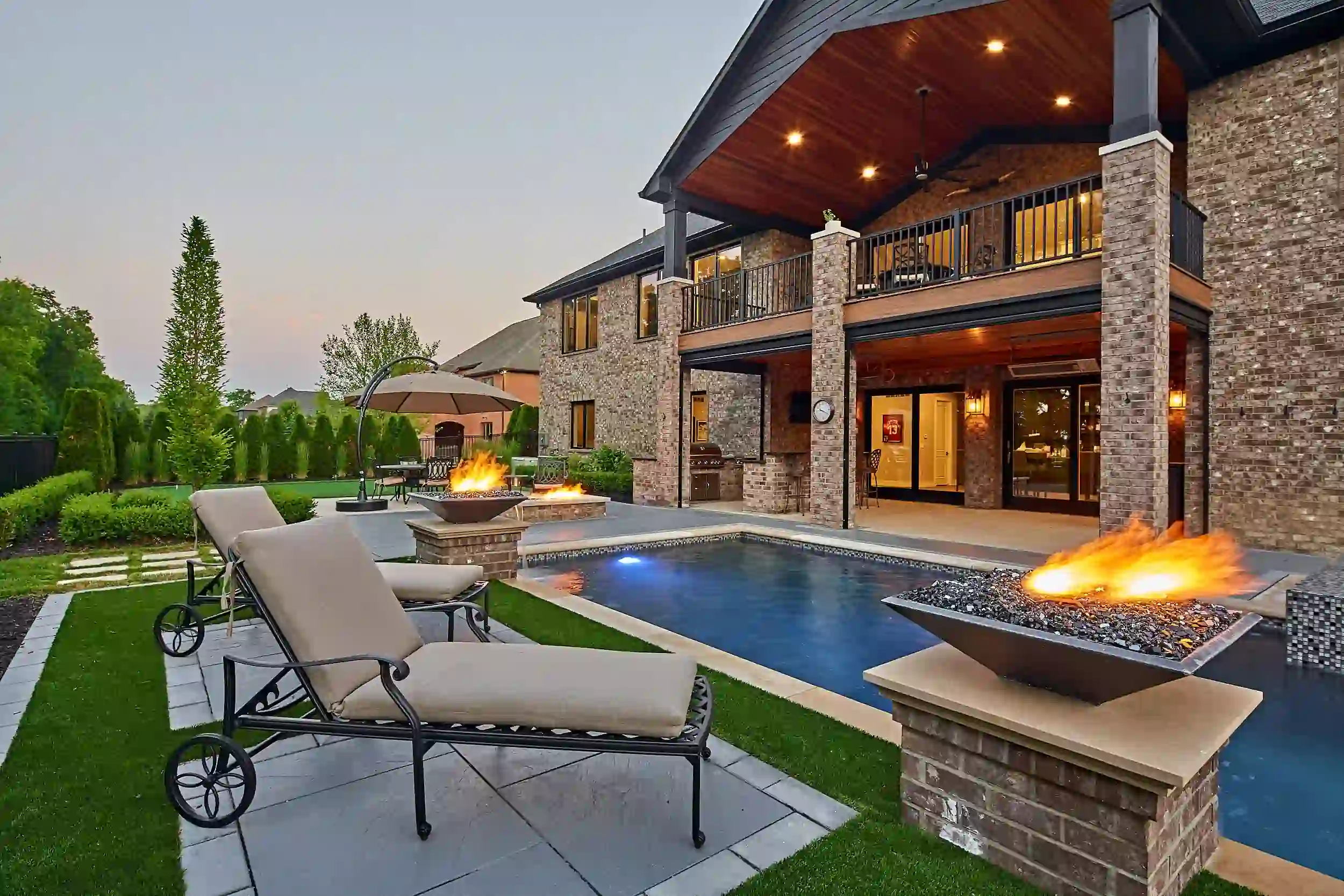With urban populations on the rise, cities face challenges in creating sustainable outdoor spaces. Prioritizing green over hardscapes can enhance the environment and quality of life. Permeable pavers offer a solution, combating the urban heat island effect and managing stormwater runoff. By embracing green infrastructure, cities can unlock the full potential of their outdoor areas. Let’s explore the key considerations and design principles to make this vision a reality.
Key Takeaways
- Pavers play a crucial role in green infrastructure by reducing stormwater runoff and sewer system pressure in urban outdoor living spaces.
- Permeable pavers allow rainwater to percolate through the surface, mitigating urban heat island effects and promoting a healthier environment.
- Strategically integrating pavers with green spaces and habitat corridors enhances urban aesthetics, supports biodiversity, and improves air quality.
- Universal access can be achieved by incorporating pavers with ramps and wide pathways, making urban outdoor living spaces inclusive for all.
- Selecting pavers that complement the surrounding architecture and landscape promotes harmonious and thriving environments that support human well-being and sustainability.
Urban Space Challenges and Opportunities
Among the most urgent urban space challenges are the limited availability of natural areas and the need for innovative solutions to address environmental concerns, presenting opportunities for designers to reimagine urban outdoor living spaces. As urban populations grow, designing urban outdoor living spaces that incorporate green infrastructure becomes essential, enabling cities to mitigate the urban heat island effect and create thriving ecosystems.
Benefits of Green Infrastructure Design
By incorporating green infrastructure design into urban outdoor living spaces, cities can reap a multitude of benefits that not only enhance the aesthetic appeal of these areas but also provide tangible environmental advantages. This approach mitigates urban heat island effects, manages stormwater runoff, and improves air quality, ultimately creating healthier, more sustainable environments for citizens to thrive in.
Pavers in Sustainable Urban Planning
In sustainable urban planning, pavers play an essential role in creating permeable surfaces that facilitate stormwater infiltration, reducing the burden on urban drainage systems and mitigating the environmental impacts of impervious surfaces. By incorporating pavers into urban design, cities can:
- Reduce stormwater runoff and alleviate pressure on sewer systems.
- Create habitat corridors for urban wildlife.
- Enhance urban aesthetics and promote community engagement.
- Support Designing urban outdoor living spaces that are resilient and sustainable.
Integrating Nature Into Cityscapes
Urban planners and designers are increasingly recognizing the importance of incorporating natural elements into cityscapes to create harmonious and thriving environments that support biodiversity and human well-being. This integration of nature into urban landscapes involves strategically placing green spaces, such as parks, gardens, and green roofs, to mitigate the urban heat island effect and improve air quality.
Designing Urban Outdoor Living Spaces
As cities evolve to prioritize human well-being and environmental sustainability, designing urban outdoor living spaces that integrate pavers becomes an essential component in creating vibrant, functional, and eco-friendly public areas. Effective design considers the following key elements:
- Accessibility: Incorporating pavers with ramps and wide pathways for universal access.
- Aesthetics: Selecting pavers that complement the surrounding architecture and landscape.
- Functionality: Designing spaces that accommodate various activities and events.
- Sustainability: Using permeable pavers to reduce stormwater runoff and promote green infrastructure.

Frequently Asked Questions
How Do Pavers Affect Stormwater Runoff in Urban Outdoor Living Spaces?
Pavers can greatly impact stormwater runoff in urban outdoor living spaces by allowing rainfall to percolate through joints, reducing surface runoff, and filtering pollutants, thereby mitigating urban hydrological cycle disruptions and environmental degradation.
Can Pavers Be Used to Create Accessible Green Roofs in Cities?
Yes, pavers can be used to create accessible green roofs in cities, providing a durable, low-maintenance surface for vegetation while allowing for pedestrian traffic, improving air quality, and enhancing urban aesthetics.
What Maintenance Is Required for Pavers in High-Traffic Urban Areas?
In high-traffic urban areas, pavers require regular maintenance to guarantee durability and safety, including frequent cleaning, joint sand replenishment, and periodic sealing to prevent stains and damage from heavy foot traffic and harsh weather conditions.
Are Pavers Compatible With Urban Agriculture and Community Gardens?
Pavers can harmoniously coexist with urban agriculture and community gardens, providing a stable, weed-resistant surface for planting beds and pathways, while also allowing for efficient water drainage and soil aeration.
Can Pavers Be Used to Create Habitat for Urban Wildlife and Biodiversity?
Urban pavers can indeed be designed to create habitats for urban wildlife and biodiversity, incorporating features like permeable surfaces, native plant species, and integrated water management systems to foster ecological balance and species diversity.
Conclusion
Urban green infrastructure requires the strategic integration of pavers into outdoor living spaces to address urban challenges and enhance ecosystem services. By incorporating permeable pavers, cities can decrease stormwater runoff, alleviate the urban heat island effect, and establish habitat corridors. Effective design of urban outdoor living spaces necessitates the intentional placement of pavers to promote biodiversity, human well-being, and urban resilience. Ultimately, the thoughtful integration of pavers into cityscapes is essential for developing sustainable, resilient, and ecologically rich urban environments.
You May Also Like To Read:









